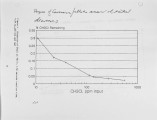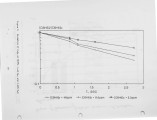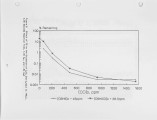| Title |
Clean Fuel Injection for Toxics Abatement |
| Creator |
Lyon, Richard K. |
| Publisher |
University of Utah |
| Date |
1990 |
| Spatial Coverage |
presented at San Francisco, California |
| Abstract |
Permitting procedures for hazardous waste incinerators usually require a test burn in which the incinerator is shown to achieve at least 99.99% destruction of the principal hazardous components in the waste the incinerator is to burn. Hazardous waste incinerators are designed to achieve this goal with a substantial safety margin, or at least there appears to be a substantial safety margin when one examines the designs in terms of the kind of laboratory measurements commonly done to measure incinerability. Unfortunately, however, hazardous waste incinerators often fail to achieve the required degree of destruction of the hazardous material. While such failures can occur because of a number of well recognized problems in mechanical engineering it is also quite possible that the commonly done laboratory measurements are misleading and that thermal oxidation of organic materials at trace concentration is substantially more difficult than is indicated by previous laboratory studies. In this paper theoretical arguments are advanced which show that the conventional tests of incinerability involves a fallacy and can overestimate by many orders of magnitude the extend to which a hazardous material will be destroyed. These arguments are supported by computer modeling and directly confirmed by laboratory measurements. A novel method for improving incinerator effectiveness is proposed. Computer modeling show that this method can be highly effective and laboratory scale experiments with a number of difficult to incinerate, hazardous chemicals shows that improvements in incinerator effectiveness of 1,000 to 10,000 should be achievable. The engineering problems involved in retrofitting this new process to an existing incinerator are discussed below and shown to be relatively minor. Process economics are also briefly discussed. |
| Type |
Text |
| Format |
application/pdf |
| Language |
eng |
| Rights |
This material may be protected by copyright. Permission required for use in any form. For further information please contact the American Flame Research Committee. |
| Conversion Specifications |
Original scanned with Canon EOS-1Ds Mark II, 16.7 megapixel digital camera and saved as 400 ppi uncompressed TIFF, 16 bit depth. |
| Scanning Technician |
Cliodhna Davis |
| ARK |
ark:/87278/s6pv6nxk |
| Setname |
uu_afrc |
| ID |
6437 |
| Reference URL |
https://collections.lib.utah.edu/ark:/87278/s6pv6nxk |






















